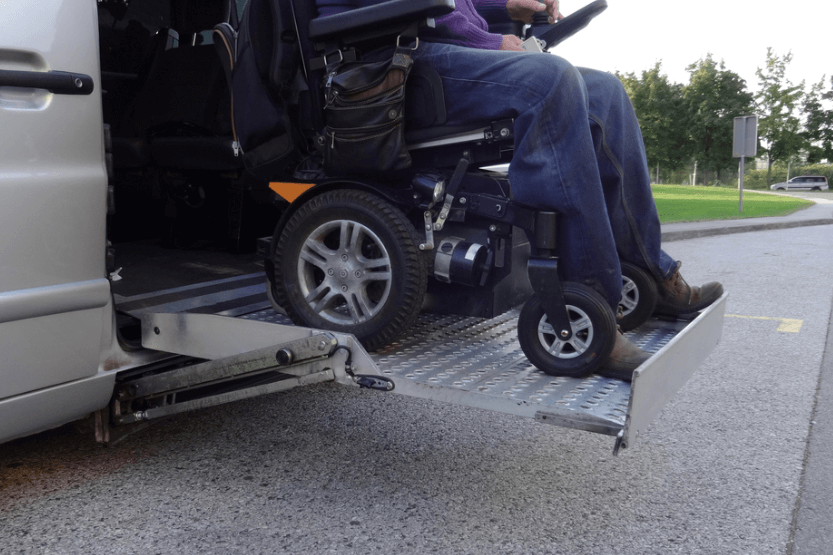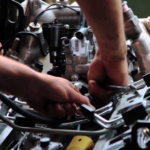Getting in and out of a car is a daily activity for most people. However, it can be a challenging task for those with mobility or balance issues. It’s essential to get in and out of the car safely to avoid any accidents or injuries.
One of the most critical factors to consider when getting in and out of the car is the seating position. If the ground is slick or icy, it’s safer to sit down in the car first and then move your legs into the car after you’re seated.
For those with mobility issues, it’s recommended to move the front seat forward or backward to make it easier to get in and out of the car.
There are also aids available that can help with getting in and out of the car. These aids can make the process easier and safer for those with mobility issues.
For example, there are swivel cushions that can help with turning in and out of the car, and there are also grab bars that can be installed to provide additional support when getting in and out of the car.
How to Get into the Car

Getting into a car may seem like a simple task, but for some people, it can be challenging. Here are some tips to make getting into the car a breeze.
1. Approach the Car
Before getting into the car, make sure that you have the car key, driver’s license, and registration in hand. Approach the car from the side where the driver’s seat is located.
2. Open the Door
Use the key or the door handle to open the car door. If the car has a remote keyless entry system, press the unlock button on the key fob to unlock the car doors. If you are having trouble opening the door, check to see if the car is locked or if there is something blocking the door.
3. Get into the Car
To get into the car, sit down on the edge of the seat and swing your legs into the car. If you have mobility problems, consider using aids like a non-slip platform step to help you get into higher vehicles. Once you are seated, adjust the seat and steering wheel to a comfortable position.
4. Fasten the Seatbelt
Before starting the car, make sure that you fasten your seatbelt. It is a legal requirement and can help prevent injuries in case of an accident. If you have trouble fastening the seatbelt, ask for assistance or consider using a seatbelt extender.
By following these simple steps, getting into the car can be a stress-free experience. Remember to always have your driver’s license and registration with you when driving.
How to Get Out of the Car
Getting out of the car can be just as challenging as getting in, especially for those with mobility issues. Here are some tips to make the process smoother:
- Plan ahead: Before getting out of the car, make sure to gather all necessary items, such as keys, phone, and purse, to avoid having to go back into the car.
- Use proper technique: To avoid straining the back and neck, it is important to use proper technique when getting out of the car. Begin by scooting to the edge of the seat, and then swing both legs out together. Use the armrests or door handles for support as needed.
- Take your time: Rushing when getting out of the car can lead to falls or other injuries. Take your time and move slowly and deliberately.
- Look before you step: Always look around the car before getting out to avoid tripping or falling over obstacles on the ground.
- Get help if needed: If getting out of the car is particularly difficult, don’t hesitate to ask for help from a friend or family member. Local dealerships may also offer assistance with getting in and out of the car.
Remember, getting out of the car safely is just as important as getting in safely. By using these tips and taking your time, you can make the process easier and avoid injuries.
Commissioned salespeople may offer advice on specific makes and models that may be easier to get in and out of, but it’s important to get honest opinions from a variety of sources before making a purchase decision.
What Tools Can Help You Get In and Out of a Car?

For people with mobility or balance issues, getting in and out of a car can be a challenge. Fortunately, there are several tools available that can help make this process easier and safer.
Swivel Seat Cushions
As per The Car Stuff (.com), swivel seat cushions are designed to help people get in and out of a car more easily. They allow the person to pivot their body while seated, which can reduce the strain on their back and legs.
Swivel seat cushions can be especially helpful for people who have difficulty bending or twisting their body.
Car Handle
A car handle is a small, portable device that can be attached to the door latch of a car. It provides a sturdy grip for people to hold onto as they enter or exit the vehicle. Car handles can be especially useful for people who have difficulty standing or have weak upper body strength.
Step Stool
A step stool can be used to help people with mobility issues get in and out of a car more easily. It can provide a stable platform for people to stand on, reducing the risk of falls or injuries. Step stools can be especially helpful for people who have difficulty lifting their legs or have limited range of motion.
Seat Belt Extender
Seat belt extenders can be used to help people with larger bodies or mobility issues fasten their seat belt more easily. They provide an extra few inches of length to the seat belt, making it easier to reach and buckle.
Seat belt extenders can be especially helpful for people who have difficulty reaching across their body or have limited arm mobility.
Insurance and Safety
It is important to remember that while these tools can be helpful, they are not a substitute for safe driving practices. Always make sure to wear a seat belt and follow traffic laws. It is also important to have proof of insurance in the car at all times, in case of an accident.
Auto Aids for Seniors
Seniors with limited mobility often have difficulty getting in and out of cars, which can make traveling a challenge. Fortunately, there are several auto aids available that can help make car travel easier and more comfortable for seniors and their caregivers.
Handybar
One popular auto aid for seniors is the Handybar, which is a portable handle that can be inserted into the door latch of a car. This device provides a secure grip for seniors to hold onto when getting in and out of a car.
The Handybar can also be used as a seatbelt cutter and window breaker in case of an emergency.
Swivel Seat
Another useful auto aid for seniors is a swivel seat, which can be installed in a car to help seniors rotate their body and slide into the car seat more easily.
This device can be particularly helpful for seniors with hip or knee problems. Some swivel seats also come with a built-in handle for added support.
Ramps
For seniors who use a wheelchair or scooter, ramps can be a useful auto aid for getting in and out of a car. Portable ramps can be easily stored in a car trunk and used to bridge the gap between the ground and the car door.
Permanent ramps can also be installed in a garage or driveway to make car travel easier for seniors with mobility issues.
Overall, these three auto aids, along with the 6 simple auto aids for seniors mentioned in a previous section, can make car travel easier and more comfortable for seniors and their caregivers. By using these devices, seniors can maintain their independence and continue to enjoy the freedom of travel.
Car Modifications for Better Accessibility

For individuals with disabilities, getting in and out of a car can be a challenging task. Fortunately, car modifications can be made to improve accessibility and make the process much easier.
One popular modification is the installation of grab bars or assist straps. These devices provide a portable support for getting into and out of a vehicle, and can be attached to the doorjamb on most cars.
The shorter portion of the “L” shaped device shoves down into the U-shaped latch, providing a sturdy handle for individuals to hold onto. These bars and straps can be particularly helpful for individuals who use a walker or other mobility aid.
Another modification that can improve accessibility is the installation of power lifts or ramps. These devices can be attached to the side or rear of a vehicle and can lift a wheelchair or scooter into the car.
Power lifts and ramps can be operated with a remote control, making it easy for individuals with limited mobility to enter and exit the vehicle.
In addition, hand controls can be installed to allow individuals with mobility impairments to operate the car without using their feet. These controls can be customized to fit the specific needs of the individual, and can include features such as a steering wheel knob or a left-foot accelerator pedal.
It’s important to note that car modifications can be expensive, and may not be covered by insurance. However, there are resources available to help individuals with disabilities pay for these modifications.
For example, the National Mobility Equipment Dealers Association offers a grant program that provides financial assistance to individuals in need.
Drawing from my experience as someone who has a senior parent, I can attest that car modifications play a pivotal role in enhancing accessibility for individuals with disabilities.
Features such as grab bars, power lifts, ramps, and hand controls not only provide greater independence but also promote improved mobility when it comes to entering and exiting a vehicle.
Key Takeaways
Getting into a car may seem like a simple task, but for many people, especially those with mobility or balance problems, it can be challenging.
According to the article “Mobility Problems: Getting In and Out of a Car Safely” (source: Kaiser Permanente), there are several safe ways to get into a car. One such method is to sit down in the car first, and then move your legs into the car after you’re seated.
This method is not only safer for those with mobility problems, but also for everyone, especially when the ground is slick or icy.
In addition to the method mentioned above, there are other ways to make getting into a car easier and safer. For example, using a car with a lower step height or a higher roof can make it easier to get in and out of the car.
Additionally, using a car with a wider door can make it easier to maneuver a wheelchair or other mobility aid into the car. Finally, using a car with a higher seat height can make it easier for people with mobility problems to get in and out of the car.
Overall, getting into a car may seem like a simple task, but for some people, it can be challenging. Fortunately, there are several safe and easy ways to get into a car, such as sitting down in the car first and then moving your legs into the car after you’re seated.
By using these methods and choosing a car that is designed to be more accessible, people with mobility or balance problems can enjoy the freedom and independence of driving.




![How to Read a Dipstick [Easy Steps and Tips] how to read a dipstick](https://roadsumo.com/wp-content/uploads/2022/01/how-to-read-a-dipstick-150x150.jpg)




